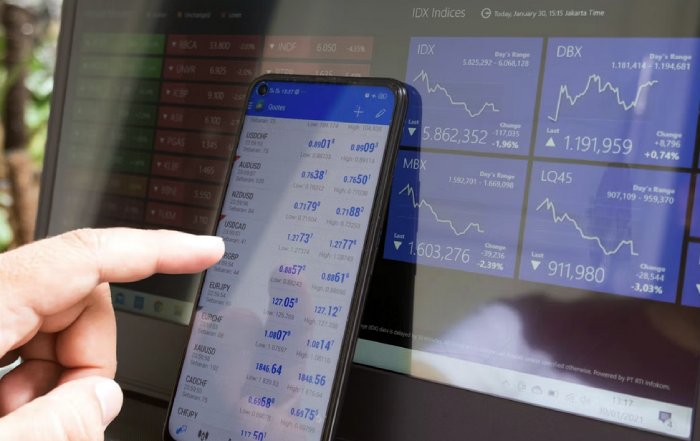Founders Adapt Leadership Styles for Tech Growth in 2025
How Tech Founders Are Rewriting the Leadership Playbook
In 2025, the most successful technology founders are no longer defined solely by their product vision or technical brilliance; they are increasingly distinguished by their ability to adapt leadership styles as their companies scale, diversify, and globalize. The founders followed closely by BizFactsDaily.com readers, from early-stage innovators in artificial intelligence to late-stage fintech and crypto leaders, are operating in an environment shaped by rapid digital acceleration, heightened regulatory scrutiny, geopolitical uncertainty, and shifting expectations from employees, customers, and investors. In this context, leadership agility has become a core strategic asset rather than a soft skill, and the founders who are thriving are those who understand that the style that works at ten employees rarely works at one hundred, let alone at ten thousand.
The shift is particularly visible in sectors where disruption is fastest. In artificial intelligence, for example, founders are expected to combine deep technical expertise with a strong understanding of ethics, governance, and public policy, as regulators in the United States, the European Union, and Asia move to shape how AI is deployed. Readers interested in the broader AI landscape can explore how this is redefining business models and operating structures in BizFactsDaily's coverage of artificial intelligence. Similarly, in digital banking and fintech, founders are forced to balance innovation with risk management, capital adequacy, and compliance, as frameworks such as Basel III and open banking regulations redefine competitive dynamics and collaboration between incumbents and challengers. This environment requires a leadership style that is simultaneously visionary and disciplined, capable of inspiring teams while satisfying regulators and institutional investors.
From Product Visionary to Organizational Architect
In the earliest stages of a startup, particularly in software, crypto, and AI, founders often operate as product-centric leaders, making rapid decisions, driving technical roadmaps, and setting the cultural tone through close day-to-day engagement with small teams. This archetype, often romanticized in Silicon Valley narratives, can be effective when speed and experimentation are paramount. Yet as a company enters growth stages, expands across markets such as the United States, Europe, and Asia, and attracts institutional capital, the founder must evolve into an organizational architect who can design structures, processes, and leadership teams capable of delivering sustainable performance at scale. Readers seeking a broader strategic context for this transition can refer to BizFactsDaily's business strategy insights, which highlight how governance and operating models mature over time.
This evolution is not merely theoretical. Research from Harvard Business School shows that founder-led companies often outperform peers in innovation and long-term value creation, but only when founders are willing to adapt their leadership style, delegate operational responsibilities, and bring in experienced executives who complement their strengths. Learn more about how founder-led firms perform over the long term through analysis available from Harvard Business School. At the same time, studies from McKinsey & Company and BCG indicate that companies with diverse and empowered leadership teams are more likely to outperform financially, underscoring the importance of founders transitioning from central decision-makers to enablers of distributed leadership. Those interested in how such transformations intersect with global economic conditions can explore BizFactsDaily's economy coverage, which frequently highlights the interplay between macro trends and corporate leadership decisions.
The Globalization Imperative and Cross-Cultural Leadership
As technology companies scale, they quickly become global organizations, serving customers and building teams across North America, Europe, Asia-Pacific, and emerging markets in Africa and Latin America. For founders, this global expansion introduces complex leadership challenges: managing distributed teams across time zones, navigating different regulatory regimes, and understanding cultural expectations in markets as diverse as Germany, Singapore, Brazil, and South Africa. The leadership style that is effective in a Bay Area engineering hub may not resonate in a London sales office, a Berlin product team, or a Singapore operations center, and the most effective founders are those who learn to flex their communication, decision-making, and management approaches accordingly.
Globalization also raises the stakes for reputational risk and stakeholder trust. In regions such as the European Union, data privacy regulations like the General Data Protection Regulation (GDPR) require founders to embed compliance and ethical data practices into their leadership priorities from the outset. Learn more about GDPR and its impact on business from the official European Commission GDPR portal. Similarly, in markets like China and South Korea, data localization rules and cybersecurity laws require close coordination between leadership, legal, and technology teams. Founders who invest in understanding these frameworks, and who empower local leaders to engage with regulators and ecosystem partners, build more resilient organizations capable of withstanding political and regulatory shocks. For readers tracking how global shifts influence corporate strategy, BizFactsDaily's global business section provides ongoing analysis of cross-border expansion, trade dynamics, and regulatory change.
Leadership in the Age of Artificial Intelligence
Artificial intelligence is reshaping not only products and services but also the internal workings of technology companies themselves. Founders are increasingly expected to be credible voices on AI governance, responsible innovation, and workforce transformation. In 2025, with generative AI and advanced machine learning widely deployed across sectors from banking to healthcare to logistics, the leadership conversation has shifted from whether to adopt AI to how to adopt it responsibly. Organizations such as OECD and UNESCO have published AI principles and policy frameworks that emphasize transparency, accountability, and human-centric design, and founders who align their strategies with these frameworks gain credibility with regulators, partners, and customers. Readers can explore global policy perspectives through the OECD AI policy observatory and UNESCO's resources on ethical AI.
This environment requires founders to blend technical literacy with ethical judgment. They must understand not only how AI models are built and deployed but also how to mitigate bias, protect privacy, and maintain human oversight in critical decisions. Leadership styles that emphasize openness, multi-stakeholder engagement, and continuous learning are proving more effective than top-down, opaque decision-making. Internally, founders are using AI tools to augment leadership, from predictive analytics in hiring and retention to scenario modeling in financial planning and product roadmapping. However, they must also manage the cultural implications of AI-driven automation, particularly the impact on employment, skills, and career paths. For readers examining how AI is transforming labor markets and workforce strategies, BizFactsDaily's employment coverage offers ongoing analysis of reskilling, hybrid work, and talent mobility.
Balancing Innovation with Regulatory and Financial Discipline
In sectors such as banking, crypto, and fintech, founders face an acute tension between the drive to innovate and the need to comply with increasingly stringent regulatory frameworks. The collapse of several high-profile crypto platforms, as well as banking sector stress episodes in the early 2020s, prompted regulators in the United States, the United Kingdom, the European Union, and Asia to tighten oversight, increase capital and liquidity requirements, and scrutinize business models more closely. Founders in these sectors must therefore adopt leadership styles that emphasize proactive engagement with regulators, robust risk management, and transparent governance, even as they continue to push technological and business model boundaries. Readers can follow these dynamics more closely in BizFactsDaily's banking section and its dedicated crypto coverage, which track regulatory developments, market structure, and innovation trends.
From a financial perspective, the era of near-zero interest rates and abundant venture capital has given way to a more disciplined funding environment, where investors expect clearer paths to profitability, stronger unit economics, and evidence of operational excellence. Reports from organizations such as the International Monetary Fund (IMF) and the Bank for International Settlements (BIS) highlight how tighter monetary conditions and macroeconomic uncertainty have reshaped capital flows, particularly into high-growth technology sectors. Learn more about the macro backdrop shaping capital allocation from the IMF's World Economic Outlook and the BIS's analysis of global financial stability. In this context, founders are shifting from a growth-at-all-costs mentality to a more balanced approach that values cash flow discipline, prudent leverage, and scenario planning. Leadership styles that embrace transparency with investors, data-driven decision-making, and realistic communication about risks and opportunities are becoming the norm, particularly for companies approaching public markets or large-scale strategic partnerships.
Culture, Talent, and the Hybrid Work Reality
The post-pandemic normalization of hybrid and remote work continues to shape how founders lead in 2025. Technology companies with distributed teams across the United States, Europe, and Asia must build cultures that can thrive without the traditional in-office rituals that once anchored collaboration and identity. Founders are learning that culture cannot be sustained by charisma alone; it requires deliberate design, clear values, and consistent leadership behavior, especially when employees are spread across time zones and cultures. Research from Microsoft's Work Trend Index and Gallup on engagement and hybrid work demonstrates that employees increasingly expect flexibility, meaningful work, and visible commitment to wellbeing and inclusion from leadership. For deeper insights into evolving work patterns, readers can explore Microsoft's Work Trend Index and Gallup's reports on global workplace engagement.
In this environment, founders are shifting from informal, ad hoc communication to more structured, transparent, and frequent engagement with teams. Town halls, asynchronous updates, and clear documentation of decisions and priorities are becoming standard leadership tools, particularly as companies scale across multiple regions. At the same time, competition for top talent in engineering, product, AI research, and go-to-market functions remains intense, especially in hubs such as San Francisco, New York, London, Berlin, Toronto, Singapore, and Sydney. Founders who succeed in attracting and retaining high-caliber talent tend to invest heavily in learning and development, internal mobility, and inclusive leadership practices that give employees a voice in shaping strategy and culture. Readers interested in how these practices intersect with broader innovation and technology trends can refer to BizFactsDaily's innovation coverage and its dedicated technology section, which frequently examine the relationship between talent, culture, and performance.
Sustainable and Responsible Leadership as a Strategic Differentiator
Sustainability has moved from the periphery to the core of corporate strategy for many technology companies, particularly those operating data centers, hardware supply chains, and large-scale cloud infrastructure. Founders are under growing pressure from investors, regulators, and customers to demonstrate credible plans for decarbonization, responsible resource use, and social impact. In Europe, regulations such as the Corporate Sustainability Reporting Directive (CSRD) are raising disclosure standards, while in markets like the United States, the Securities and Exchange Commission (SEC) is sharpening its focus on climate-related risk disclosures. Learn more about evolving sustainability reporting expectations from the European Commission's CSRD resources and the SEC's guidance on climate and ESG disclosures.
For founders, this means that leadership now involves not only driving financial and technological performance but also articulating a clear sustainability narrative backed by measurable targets and transparent reporting. Many are aligning their strategies with frameworks such as the Task Force on Climate-related Financial Disclosures (TCFD) and the Science Based Targets initiative (SBTi), using these as anchors for capital allocation, product design, and supply chain decisions. Learn more about climate-related financial risk management through the TCFD recommendations and science-based decarbonization pathways from the SBTi. Founders who integrate sustainability into their leadership style, rather than treating it as a compliance obligation, are better positioned to attract long-term capital, win enterprise customers with ESG mandates, and build trust in communities where they operate. For a focused perspective on how sustainability intersects with business strategy, BizFactsDaily's sustainable business section offers ongoing coverage of climate, ESG, and responsible innovation trends.
Investor Relations, Capital Markets, and the Public Company Transition
Many technology founders in 2025 are navigating the complex transition from private to public markets or managing life as leaders of already-listed companies in volatile stock market conditions. This transition fundamentally changes the leadership demands placed on founders, who must now balance the expectations of public shareholders, analysts, and regulators with the long-term innovation agendas that originally defined their companies. Leadership styles that once thrived on informality and rapid pivots must evolve toward greater predictability, disciplined disclosure, and robust internal controls. Founders must also become adept communicators in earnings calls, investor days, and regulatory filings, where clarity, consistency, and credibility are critical. Readers tracking these dynamics across global capital markets can follow BizFactsDaily's stock markets coverage, which highlights how macro conditions and sector-specific developments influence valuation and investor sentiment.
Capital markets in 2025 remain sensitive to interest rate paths, geopolitical tensions, and sector-specific regulatory developments, particularly in AI, fintech, and crypto. Organizations such as the World Bank and OECD provide regular analysis on global growth, capital flows, and structural reforms that shape investor appetite for technology assets. Learn more about these macro factors through the World Bank's Global Economic Prospects and the OECD's economic outlook. Founders leading public or late-stage private companies must therefore develop leadership styles that incorporate macro awareness, risk communication, and scenario planning, ensuring that boards and investors understand both the upside and the risks inherent in their strategies. For those seeking a broader view of investment trends and capital allocation in technology, BizFactsDaily's investment section and its regularly updated news coverage provide timely analysis of funding rounds, IPOs, M&A, and strategic partnerships.
Founders as Public Figures and Policy Influencers
In 2025, many technology founders operate not only as corporate leaders but also as public figures shaping debates on issues such as AI ethics, data privacy, digital identity, platform governance, and the future of work. High-profile leaders at companies such as OpenAI, Google, Microsoft, Meta, and Tesla routinely engage with policymakers, testify before legislative bodies, and participate in global forums such as the World Economic Forum (WEF) in Davos. Learn more about how global leaders are addressing technology and governance challenges through the World Economic Forum's insights. This visibility amplifies their influence but also increases scrutiny, making leadership style a matter of public interest as well as internal culture.
Founders who embrace transparency, acknowledge trade-offs, and engage constructively with critics and regulators tend to build more durable reputations than those who adopt combative or opaque stances. At the same time, the rise of misinformation, cyber threats, and geopolitical tensions means that technology leaders must consider national security and societal resilience in their decisions, particularly around critical infrastructure, encryption, and cross-border data flows. Organizations such as NIST in the United States and the European Union Agency for Cybersecurity (ENISA) provide frameworks and guidance on cybersecurity and digital resilience that increasingly inform board-level discussions and leadership priorities. Readers can explore these frameworks through NIST's cybersecurity resources and ENISA's analysis of EU cybersecurity policy. Founders who integrate these considerations into their leadership style, rather than treating them as peripheral risks, enhance both their companies' resilience and their own credibility as responsible stewards of powerful technologies.
What This Means for the Next Generation of Founders
For the global audience of BizFactsDaily.com, which spans aspiring founders, seasoned executives, investors, and policymakers across North America, Europe, Asia, and beyond, the evolving leadership landscape offers both a roadmap and a challenge. The roadmap is clear: founders who succeed in 2025 and beyond are those who treat leadership as a dynamic capability, continuously refined as their organizations grow, markets shift, and technologies evolve. They move from product-centric to organization-centric leadership, from local to global mindsets, from growth-at-all-costs to sustainable value creation, and from insular decision-making to multi-stakeholder engagement. The challenge lies in executing this evolution while maintaining the entrepreneurial energy and innovative spirit that sparked the venture in the first place.
For emerging founders, especially those building in frontier domains such as AI, quantum computing, climate tech, and Web3, it is increasingly important to develop leadership skills in parallel with technical and commercial capabilities. This includes building early familiarity with regulatory frameworks, sustainability expectations, capital markets dynamics, and cross-cultural management. It also involves cultivating self-awareness, seeking mentors and advisors who can provide honest feedback, and being willing to adjust leadership styles as the organization and context demand. For those exploring entrepreneurship and leadership journeys, BizFactsDaily's founders section offers profiles, lessons, and analysis that highlight how different leaders have navigated these transitions.
Ultimately, the founders who will define the next decade of technology are those who recognize that leadership is not a fixed identity but an evolving practice grounded in experience, expertise, authoritativeness, and trustworthiness. By combining deep domain knowledge with ethical judgment, cultural intelligence, financial discipline, and a commitment to sustainable impact, they can build companies that not only grow rapidly but also endure. As BizFactsDaily.com continues to track the intersection of artificial intelligence, banking, business, crypto, the economy, employment, innovation, investment, marketing, stock markets, sustainability, and technology, one theme is likely to remain constant: in a world of accelerating change, adaptable leadership is the ultimate competitive advantage.








